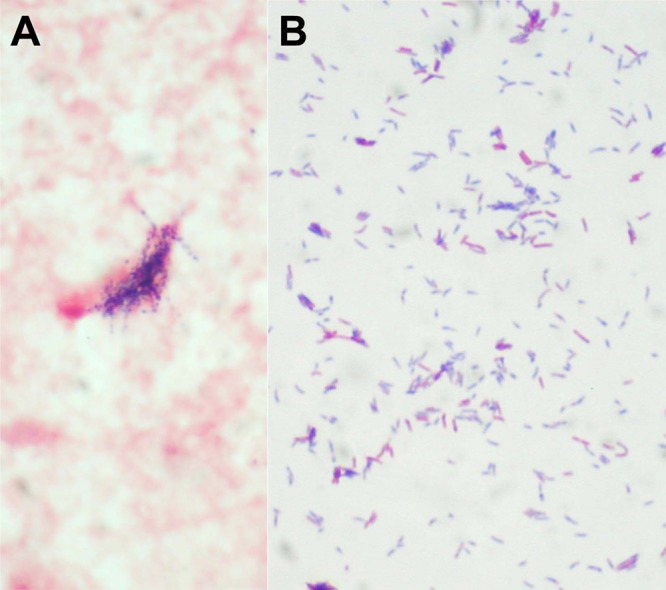A 47-year-old female presented to an outpatient clinic with a fever, a cough, nonpurulent phlegm, and general fatigue. Her social and travel history was noncontributory. Her past medical history was most significant for stage IIB cervical cancer, diagnosed 4 years previously with parametrial involvement. The squamous cell carcinoma, characterized additionally by paraaortic and paracaval lymph node involvement, was initially treated with cisplatin and radiation therapy. The clinical course progressed satisfactorily until pericardial and paratracheal metastasis was discovered, 6 months prior to the current presentation. An eight-cycle regimen of carboplatin and paclitaxel was initiated at that time.
At the current presentation, the patient had completed six cycles of chemotherapy. The patient was tachycardic (heart rate of 100), febrile (99°F), and slightly tachypneic (respiratory rate of 16). Her peripheral leukocyte count was 5,900 cells/μl, with increased proportions of segmented neutrophils (76.8%) and monocytes (16.1%). Two sets of blood cultures were obtained from a peripherally inserted central catheter (PICC) line prior to removal of the device. One positive blood culture detected by Bactec FX (Becton Dickinson, Sparks, MD) prompted inpa-tient hospitalization. Empirical vancomycin and levofloxacin therapy was initiated to treat both bacteremia and respiratory symptoms. A chest X-ray revealed no clear infiltrates.
A Gram stain from this positive Bactec Plus Aerobic/F culture vial (Becton Dickinson) revealed beaded branching Gram-positive bacilli (Fig. 1A). The bottle contents were subcultured to blood agar and chocolate agar for incubation in 35°C at 5% CO2 and to blood agar incubated at 35°C under anaerobic conditions. Within 72 h, rough, irregular, and dry CFU with a goldish pigment were observed on blood agar; the chocolate agar incubated aerobically and the anaerobic blood agar yielded no growth. Kinyoun acid-fast staining of colonial growth was negative. However, a partial reaction derived from modified acid-fast staining of colonial growth (Fig. 1B) contributed to preliminary identification of the organism.
FIG 1.

(A) Gram stain of contents of the positive blood culture bottle. Total magnification, ×1,000. (B) Modified acid-fast stain of CFU subcultured from the positive blood culture bottle. Total magnification, ×1,000.
(For answer and discussion, see page 1026 in this issue [doi:10.1128/JCM.03463-12].)


